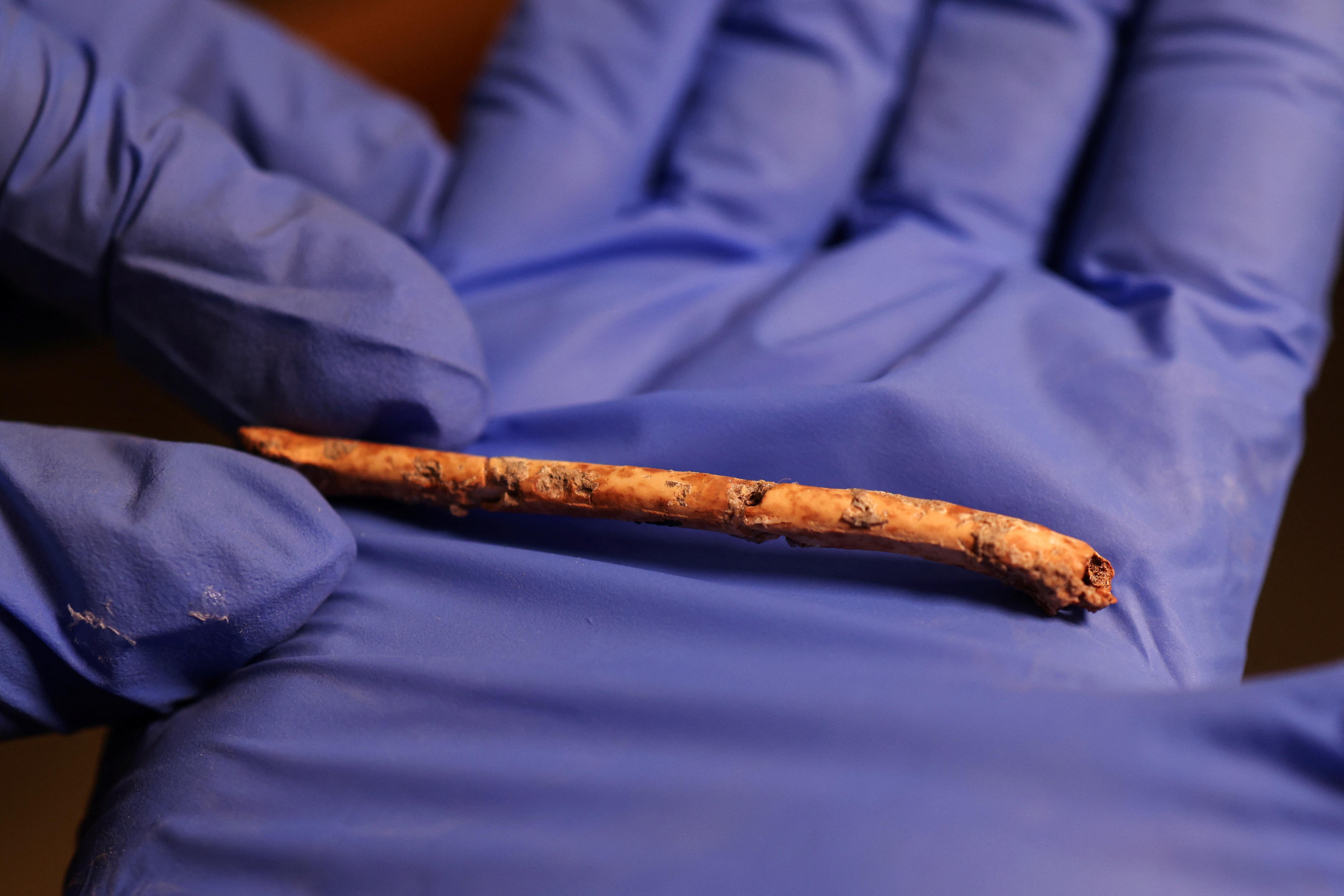
 A researcher holds a miniature flute, which scientists believe was crafted 12,000 years ago from bird bones and may have been used for bird calls, at the Hebrew University of Jerusalem, in Jerusalem, June 11, 2023. (PHOTO / REUTERS)
A researcher holds a miniature flute, which scientists believe was crafted 12,000 years ago from bird bones and may have been used for bird calls, at the Hebrew University of Jerusalem, in Jerusalem, June 11, 2023. (PHOTO / REUTERS)
JERUSALEM - Miniature flutes crafted 12,000 years ago from bird bones and discovered in northern Israel may have been used for bird calls at a time when humans were refining their interactions with animals, a team of scientists said.
The research team made replicas of the fragile originals, which they found emitted high-pitched trills resembling the calls of birds of prey
Seven small wing bones uncovered at a dig site in the Hula Valley - a popular bird watching spot to this day - were identified to have tiny holes bored into the bones for finger placement and as a mouthpiece.
ALSO READ: Scientists seek to crack mystery of skeleton cave in Spain
The research team made replicas of the fragile originals, which they found emitted high-pitched trills resembling the calls of birds of prey.
One theory is that the flutes were used attract the birds of prey - namely the Eurasian Sparrowhawk and the Common Kestrel - to frighten waterfowl, making them easier to catch.
The findings were published in the journal Nature Scientific Report by researchers from Hebrew University of Jerusalem, the Centre de Recherche Français à Jérusalem, the Centre nationale de recherche scientifique, and the Israel Antiquities Authority.
Over 500 million birds pass through the Hula Valley each year as they migrate between Europe and Africa, making it a popular destination for bird watchers.
ALSO READ: Peruvian archaeologists unearth 500-year-old Inca ceremonial bath
The flute bones, which came from Eurasian coots and Eurasian teals, were found in the Eynan/Ain Mallaha dig site linked to hunter-gatherers from the final Natufian period 12,000 years ago.
That was a period when our ancestors were beginning to settle down, farm and domesticate animals, said forensic anthropologist Tal Simmons of Virginia Commonwealth University, who identified the type of birds.
The use of flutes to communicate with the birds, Simmons said, was "really cementing that transition to a time when the relationship between humans and animals began to change".
Copyright 1995 - 2023. All rights reserved. The content (including but not limited to text, photo, multimedia information, etc) published in this site belongs to China Daily. Without written authorization from China Daily, such content shall not be republished or used in any form.
 |
 |
CHINA DAILY HONG KONG NEWS |
OPEN |
